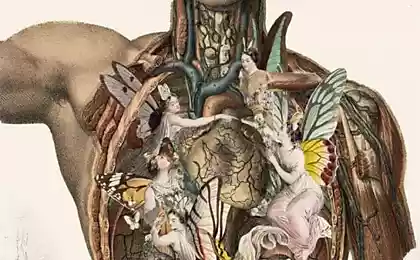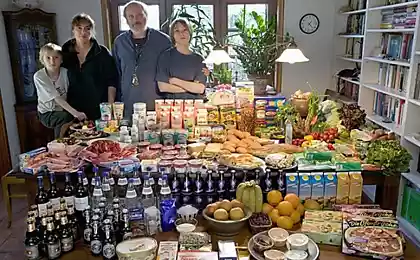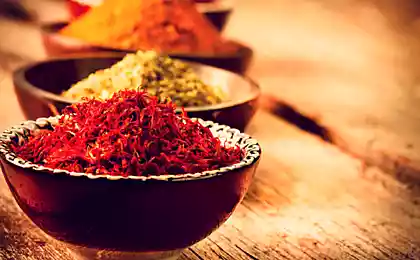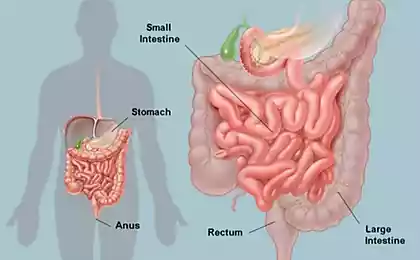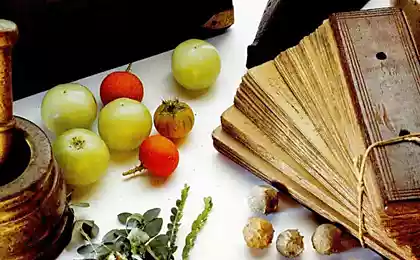524
Low carbohydrate foods – the choice is suicide
Forty two million seventy nine thousand nine hundred twenty four
The article will be especially useful for people with diabetes, prediabetes and obesity. Sure you have heard information that sweet is harmful. And sounds the dogma so often that people absolutely do not respond to these warnings. They have developed immunity and a filter for such information. What if I would say that any carbohydrate foods are harmful? I argue your statement later. In the meantime, I want to ask: “do You know what carbs are and what foods they are?”
I just an appointment you have to constantly talk about food, about proteins, fats and carbohydrates, and vitamins, minerals and other important substances for our body. And I was faced with this problem is that many of my pacientov have no idea what carbs do and what foods they are contained. No, they of course say that the sweet bread they can not, because sugar increase. But it is funny when I ask in response: “why do they increase the sugar?” that one enters into a stupor. He can't say that it is a carbohydrate food has that effect on him. And so I want to start by saying that to hold you a short educational program on carbohydrates.
What are the carbohydrates in foods?I hope you will be interested to know that carbohydrates are organic substances which consist of molecules of carbon, oxygen and hydrogen. The name “carbohydrate” is derived from the combination of “carbon + water”, i.e. is a compound of carbon with water. Carbohydrates are different depending on the size of the molecule. Structural unit of any carbohydrate is a saccharide.
In fact, carbs are very much and some you never even heard of, so I will give examples of only those that you know or ever heard of. The number of saccharides carbohydrates are divided into:
- monosaccharides (glucose, fructose etc.)
- disaccharides (maltose, sucrose, lactose, etc.) and oligosaccharides (raffinose, acarbose etc.)
- polysaccharides (cellulose, starch, glycogen, chitin, pectin, etc.)
In order to digest the polysaccharides need time, but they are also quickly absorbed into the bloodstream in about 30-40 minutes. There are, however, insoluble polysaccharides, e.g., cellulose (cellulose) or chitin. These types of sugars found in vegetables, greens, salads, nuts, and seeds, the shells of the grains of cereal, the coconut.
Making low carbohydrate foods with hormones?Now let's see what happens when glucose is metabolized, because it is the main monosaccharide, which is the source of energy for the body. In the process of digestion of glucose and its level in the blood increases. Special receptors detect this increase and provide a signal to the pancreas for insulin production. I explained this is the most primitive and simple that you understood the essence, this process is harder than you think.
If the concentration of blood glucose rises very quickly and rapidly, then insulin will be produced, too, a very large number. Moreover, the ratio glucose/insulin unequal, i.e. insulin will always be greater with the stock. Further, the insulin delivers the required amount of glucose into needy cells, and the excess converts to fatty acids and lays in the fat depots, i.e. in the form of visceral fat and subcutaneous fat tissue.
But after attaching themselves eaten glucose in the blood is still increased amounts of insulin, which continues to dispose of glucose. Reduced glucose levels to a critical low and the person begins to feel hungry, as one of the signs of hypoglycemia. Here he is search a subconscious reflex. He begins to search for food, which could quickly increase the level of glucose in the blood. And this is again something sweet or mastrosavva. Agree that the more often you grab a cookie or bread when hungry, but not for a piece of meat or fat. The process repeats again and formed a vicious circle.
Thus, people quickly can gain extra pounds and it also develops insulin resistance, which leads to the start of another vicious circle. In addition to deposits of fat on the flanks and belly, excess insulin leads to another serious complications. For example, influences lipid metabolism, increasing total cholesterol, low-density lipoproteins and triglycerides and lowers high density lipoproteins. The result of progressive atherosclerosis and all complications associated with this process.
In addition, elevated insulin levels blocks the process of breakdown of fat. Therefore people with high insulin levels so difficult to lose weight. And also contributes to thickening of the basal membrane of blood vessels, which further narrows the lumen of blood vessels. Excess insulin binds water and contributes to high blood pressure.
This is what happens when the blood quickly and rapidly come carbohydrates. That's what makes EXCESS insulin. About fructose, I would say so. She absorbed without the participation of transporters and does not need insulin to penetrate cells. But at the same time, she almost all of it is retained in the liver, turning into fat and more than 50% of the absorbed turns into glucose. As a result you get fatty liver and increase glucose and hence insulin levels.
But you say that all this only applies to quick or easy carbohydrates present in sweet products. I hasten to disappoint you it is not so. Almost all foods containing carbohydrates know sugar levels very quickly. Diabetics on insulin will not lie, if not inject insulin or prick later, the sugar takes off very quickly even from the beloved of buckwheat, which by the way has a glycemic index of 50. Kind of like a medium glycemic index, but the sugar increases very well. That's why there is a resentment among diabetic, that sugar high after seemed to be supposedly safe and so vehemently recommended by your doctor buckwheat.
And diabetics everything else violated the first phase of insulin secretion, i.e. how would a broken turbo – emergency release of insulin in the blood in the first minute of raising sugar. But the second phase insulin is working and generates a large amount on an already pretty elevated glucose level in the blood.
But that's not all. As a result, the use of strongly carbohydrate foods in the brain almost blocked the synthesis of the hormone Leptin, which is responsible for the feeling of satiety. Therefore, the person does not feel saturation, even when his stomach is full to capacity and continues to eat and eat. As a result, overeating. Sugar affects the brain like drugs, what gives rise to euphoria and dependency, lower cognitive function and disturbed emotional control.
Carbohydrate content in foodsA reasonable question arises: “what is then?”. I hear him constantly. Not by bread alone as they say... first, if you want to keep insulin levels normal, then you will have to completely abandon the fast carbs, and it:
- all the sweets or foods with sugar
- all products made from any flour except low carb varieties (coconut, almond, sesame, etc.)
- potatoes, corn, green peas
- most fruits (one Apple, pear, plum, kiwi, Mandarin a day)
- all grains, including everyone's favorite buckwheat
- most legumes (you can leave some lentils)
- milk and dairy products is limited
- juices, fruit drinks, kvass store
- beer
- sweet liqueurs, bitters, cordials, wines, etc.
- all kinds of cabbage (white, red, broccoli, cauliflower, Savoy, etc.)
- the squash and zucchini
- pumpkin
- cucumbers, tomatoes, Bulgarian pepper
- eggplants
- radish, turnip, radish, rutabaga
- in a small number of and better fresh carrots, onions, beets
- stemmed and tuberous celery
- avocado
- any greens (parsley, dill, muroran, thyme, rosemary, cilantro, etc.)
- salads (iceberg, Chinese, Roman, etc.)
- curd
- dairy products in small amount
- limited to any berries
- nuts and seeds
In fact, I briefly told you about the very low-carb diet, which restricts only carbohydrates, proteins, and fats are not. I want to note that any change of food can cause protest and is a kind of stress to the body. I do not recommend abruptly change to a low-carb diet, remove from your diet the junk foods gradually, but do not tighten it.
If any of the recommended products while you are not suitable due to poor tolerability, then do not force yourself, give your body time to adapt to the intestines to be cleansed from the accumulated mucus, as it interferes with normal digestion and absorption of nutrients. published
Author: Dilara Lebedev
P. S. And remember, only by changing their consumption — together we change the world! ©
Source: saxarvnorme.ru/uglevodnaya-pishha-vybor-samoubijcy-soderzhanie-uglevodov-v-produktax.html







